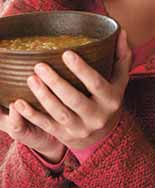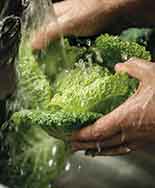
Agni—The Flame Within
Agni is the Sanskrit name for 'fire'. In Ayurveda, it refers to all the biological fires that govern metabolism in our bodies. However the main one, that we have most control over, is the Digestive Fire.
Think of agni as a fire that consumes your food into its nutrient parts. If your digestive fire is low then you end up with unburnt toxic food residue which your body then has to deal with. The way your agni behaves depends on several factors. Two important factors are the state of your current health and your ‘Dosha’ profile.
Take a quiz to find your Dosha profile >
 9 Day Ayurveda Discovery Course
9 Day Ayurveda Discovery Course
Canberra
Module 1: October 11th–13th 2019, Friday to Sunday
Modules 2: April 17th–19th 2020, Friday to Sunday
Module 3: September 11th–13th 2020, Friday to Sunday
Discover even more about your constitution and how to balance your doshas in this potent introductory certificate course to Ayurveda. You will learn how to rebalance your life and optimise your health with the 5 basic Ayurvedic approaches to healing - diet, herbs, therapies, yoga and lifestyle changes.
Find out more >
The way your agni behaves depends on your health or 'Dosha' profile.
Pitta Agni
Digestive agni is strongest in pitta types, as they are dominated by the fire element. People with this constitution have a good digestion, and need regular, adequate meals. They get more hungry than others as their digestive fire completely consumes the previous meal and they are really ready for more food.
Our digestion is like a wood burning stove. The pitta version is very hot and can consume large quantities of fuel. Like a good stove needs loving attention, so do our bellies. To keep a burner working well, you need to add the right fuel at the right time, and clean it out regularly. It is the same for us. If you are late eating or eat too much food, the fire gets weaker and you get clogged up.
Pitta digestion needs regular and substantial amounts of good quality food. Three times a day with lunch being the main meal seems to work best. Too much spicy food, or oil, is like throwing petrol into a stove—it can create an explosion!
Vata Agni
Vata types have a weaker and much more sensitive digestion. It needs to be kindled carefully to keep it working. Theirs is like a small stove that burns quickly and needs a lot of attention. Air types are suited to smaller, more frequent meals, perhaps three main meals a day with snacks in between. Like a small fire needs dry, easy to burn wood, air types require juicy and digestible, good quality food. Regular oil works well for vata. As you can smother a small fire with too much or damp fuel, so the vata digestion cannot cope with large or indigestible meals.
Although it is against their spontaneous and excitable nature, in general air types need to dine at regular times and be relaxed as they eat. Warming spices like ginger and pepper help stimulate digestion.
Kapha Agni
In contrast, kapha types have a slow and often sluggish digestion. It is more similar to a really solid wood burning stove, like a huge aga cooker, that burns slowly all night. This type of fire resembles the earth constitution, being slow and steady. Like pitta types, kapha can eat large meals, but it sustains them for a long time. They do not get hungry again in the same way as fire types. However this does not stop them tucking into another large meal, or substantial snack, even before the previous one has been digested.
It is ironic that vata/air types, who need to eat often, and be settled are the most easily distracted and often miss a meal, or eat on the run. Fire types, may be so engaged in what they are doing that they are late in eating, or go for stimulating hot foods, with alcohol or coffee. Then earth types who are the only ones who can go without food are always there first in the dinner queue, and never willingly miss a meal.
All this creates chaos for our digestion, which is why the science of Ayurveda is so essential, to contain and protect the fire of life within us.
Toxins or ‘Ama’
Ama is the residue from agni, the digestive fire. A good stove will burn hot and efficiently, and all you are left with is a small amount of fine white ash. This does not clog up the stove and allows it to carry on working efficiently.
However if the fire is not going very well, or you add fuel that does not burn easily, you get incomplete combustion. Not only is there less heat and energy from the fire, there is a lot of smoke, and a large quantity of black semi combusted residue. All of this clogs up the stove and it works less efficiently.
It is the same with us if we do not look after our constitutional fires well, there is a large amount of residue, that clogs up and toxifies our system, and this is called AMA in Ayurveda. It subdues our digestion and blocks the channels of elimination leading to even more toxicity.
To avoid this Ayurveda prescribes the right amount and type of food for each dosha type, and a periodic detox to actively clear any stuck ama from our systems. It is a bit like cleaning the air and oil filters in our car. If we never did that, the car would not work very well and may break down. It is the same with us. Ayurveda is like the car manual telling us how to maintain our precious human vehicle.
 Ayurveda Certificate Course
Ayurveda Certificate Course
Canberra
Module 1: October 11th–13th 2019, Friday to Sunday
Modules 2: April 17th–19th 2020, Friday to Sunday
Module 3: September 11th–13th 2020, Friday to Sunday
Discover more about how to boost your Agni and reduce Ama using natural health methods that are 1000's of years old in this potent introductory course to Ayurveda.
You will not only learn how to rebalance your life the natural way but you can help your loved ones optimise their health too.
Find out more >































